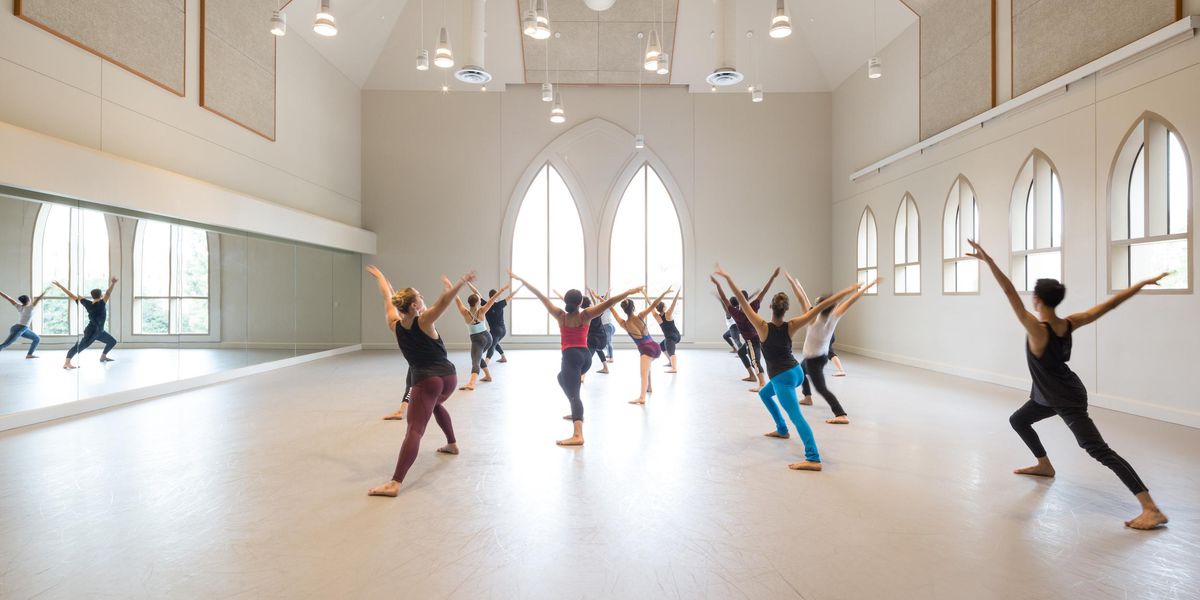Summer Study Guide 2012: On the Verge of Professional
A rigorous, star-studded intensive, the Carreño Dance Festival gives students a taste of company life.
As the last note of the third-act male variation from Don Quixote fades, a dancer gathers himself to his feet. A handsome man in a blue shirt and sandals runs up the stage steps and immediately gives the performer corrections on his port de bras, stopping only to shout out lighting changes into the darkness. A gap in height and age is made more pronounced as the sidelights intensify and the two figures become silhouettes. But their familiarity, the way they are finessing the piece’s intricacies, suggests they’re peers.
The man in blue is Jose Manuel Carreño, the international star who recently retired from American Ballet Theatre, and he’s running tech rehearsal for the final performance of Carreño Dance Festival, his new summer intensive in Sarasota, Florida. Aran Bell, who has just finished the Basilio variation, is only 13 years old. But he, and the other 50-some students, are being treated like professionals in a company—and are expected to behave that way.
“Being here at the theater for a few weeks is a blessing,” says Carreño. He is referring to the beautiful Sarasota Opera House, which seats about 1,200 and is used every day for three weeks in August for class and rehearsals. His goal for the program is to make the students’ transition from studio to stage seamless. “Through all my years, I have seen many people spend so much time in rehearsal, and when they come to the stage and have makeup and lights, they freak out. It’s a totally different thing.”
Divided into two groups, students ages 12 to 19 rotate between the stage and theater studios (this year, there are plans to use an off-site space nearby to accommodate the expanding student body) for classes each day. Women take technique, pointe, and rehearsal daily; partnering, modern, and world dance are also offered. The men take some classes separately, including one focusing exclusively on turns. Many students board at nearby apartments and have a few free evenings and weekends to explore the beach town. Because the intensive is in August, some participants choose to attend other summer programs before this one—a decision that should be considered carefully, since the daily schedule at the Carreño intensive can be exhausting.
The festival participants are routinely addressed as “company.” They check the call board for their daily schedule and get notes after rehearsal like working dancers would. “This is a different summer intensive,” says Robert de Warren, the former director of Sarasota Ballet who co-founded the festival. “These pre-professional–level dancers, they probably have gold medals and all of that, but they have no idea what it is to be a professional dancer in a company. Some dancers become demoralized because they were young stars and suddenly they go into a company and they’re in the corps. So we’re trying to build that transition and give them this professional attitude.”
“They shouldn’t even call it an intensive,” says Larissa Saveliev, the co-founder of Youth America Grand Prix, who attended the final performance. “It’s more like an apprenticeship.”
To enrich the atmosphere further, Carreño has invited fellow stars such as Gennadi Saveliev and Drew Jacoby to serve both as members of the faculty and as performers who stand at the barre with the students for morning warm-up. “Being able to take class on the stage, I feel like I’m in the Bolshoi,” says Allie Burman, a 13-year-old from Phoenix, Arizona. “It feels like a hundred dancers all together doing the same combinations and Mr. Carreño is like our director. The atmosphere, being in a live theater and having a live pianist, is great.”
The students spend most of their non-class time rehearsing ensemble pieces. Last year, the women performed the white act of Swan Lake. All the advanced students worked tirelessly on a grueling, 40-minute, onstage “Masterclass,” which had to be timed down to picking up and moving the barres. “Corps de ballet work is the most difficult,” reasons de Warren. “You ask them to do a variation, they can be brilliant. But to be in line…”
To achieve those lines and coordination, students get first-class instruction from Loipa Araújo, the no-nonsense but extremely supportive Cuban teacher (see “Teacher’s Wisdom,” March 2011) who coaches the likes of Tamara Rojo and Carlos Acosta at The Royal Ballet, as well as Carreño himself. This festival holds the distinction of being the first opportunity to take her class in the U.S. “Ms. Loipa is so demanding,” says Kenneth Dwigans, an 18-year-old from the Royal Ballet School. “She keeps you on your toes, keeps you working to make things cleaner.” Full of tricky combinations that demand alert minds, her class builds a disciplined, strongly regimented foundation. “For me it’s important to give them the knowledge that doing a lot of pirouettes and doing tricks is not the currency to success,” says Araújo, who heads the masters and doctorate in ballet program at the King Juan Carlos University in Madrid. “They need to be conscious that dancing is not just a fact of quantity but of quality.”
For those who can absorb this kind of focused study, there are payoffs that are a bit more obvious. Says Burman, “I got to partner with Jose Carreño, and that topped it off for me!”
Kina Poon is a
Dance Magazine associate editor.
From top: Jose Manuel Carreño works with students Alaia Rogers and Michael Mengden at the Carreño Dance Festival. Photo by Loren Mayo, Courtesy The Observer Group; Carreño teaching. Photo by Cliff Roles, Courtesy CDF; Student Gabrielle Chock performs in the Carreño Dance Festival’s Young Adults Showcase. Photo by Loren Mayo, Courtesy The Observer Group.




